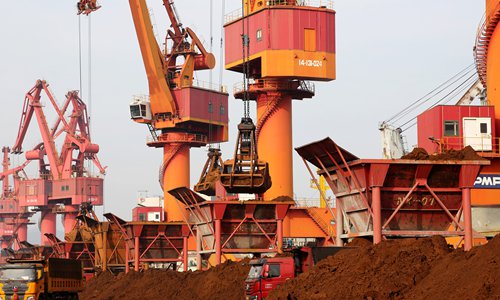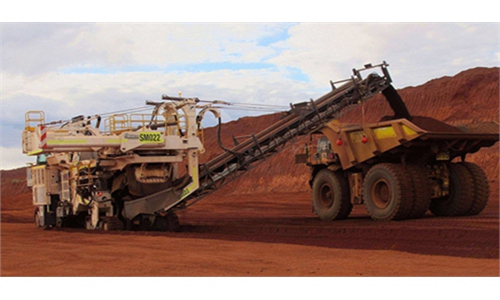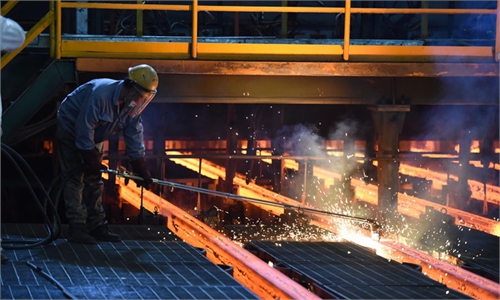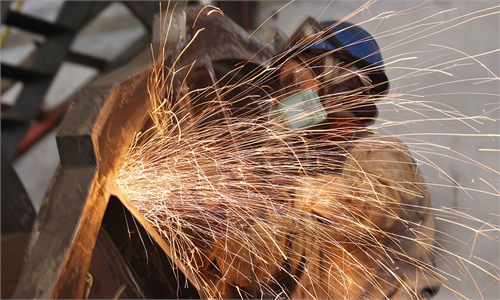
Cranes unload imported iron ore at the Lianyungang Port in East China's Jiangsu Province. File Photo: VCG
China's iron ore imports saw a significant price hike of 69.5 percent from January to July, data with China Customs showed, which experts said was driven by the latest rally in commodity prices due to global monetary easing, a lack of bargaining capability in pricing and speculation by market players.Industry experts forecast the prices have passed their peak and are not in a position to rise further.
The price rise of iron ore comes with the increase in China and Australian trade, which saw a year-on-year jump of 37.4 percent, in which iron ore trade has accounted for a significant share.
The sharp rise in iron ore prices began in November last year, driven by a collective rally in commodity prices due to global monetary easing, and the irrational international price mechanism that favors the industry monopolists such as Rio Tinto Group.
Iron ore production by VALE of Brazil, was lower than expected in the second quarter, which further exacerbated the tight supply on the market.
However, market analysts believe that the price level of iron ore has passed its peak and is likely to drop in the coming months.
The iron ore price dropped recently, which led to a speculation of a sustained decline for the rest of the year after its largest consuming country China has launched strict measures aimed at restricting steel production.
China iron ore imports saw a 1.5 percent drop from January to July, a reflection of China's continuous efforts to diversify it sourcing of supplies and increase use of recycled steel in responding to the country's call for energy conservation and emissions reduction.
As China's domestic steel production is set to ease off, and that iron ore prices will likely drop to below $200 per ton, Beijing-based China International Capital Corp (CICC), one of the nation's top investment bank, said in a research note.
Analysts from the CICC expected China's steel production growth will fall into negative territory year-on-year from the third quarter of this year, with iron ore prices likely to fall from record high levels.
At present, iron ore supply and demand is basically balanced due to the continuous recovery of overseas economies that has led to the growth of iron ore demand, combined with production disruption in some mines amid the pandemic, Wang Guoqing, research director at the Beijing Lange Steel Information Research Center, told the Global Times on Sunday.
"But with the decline of steel production becoming a trend, in the process of steel production reduction in China, iron ore prices are obviously returning to normal," Wang said.



